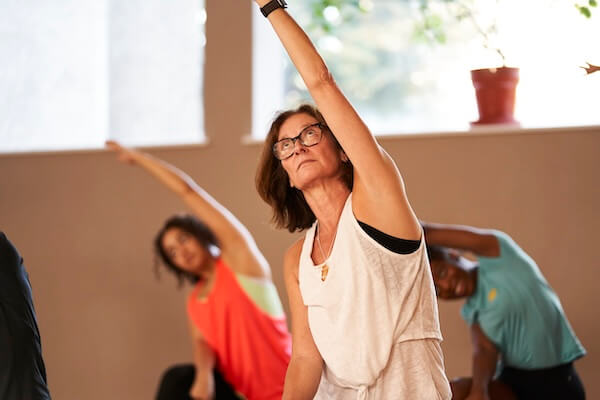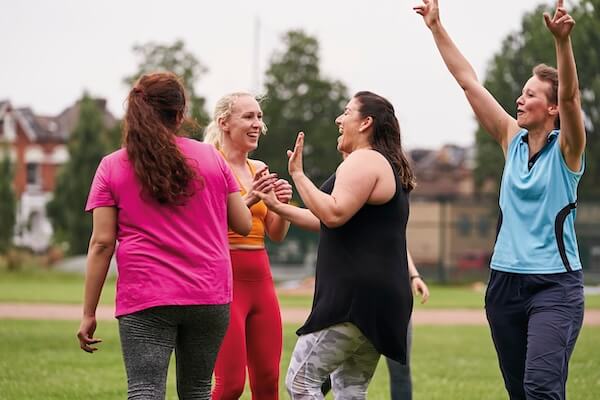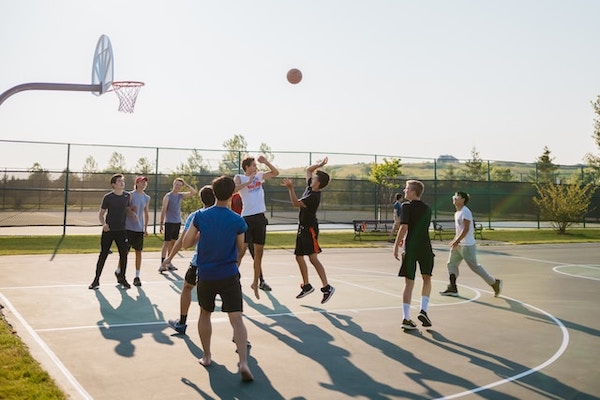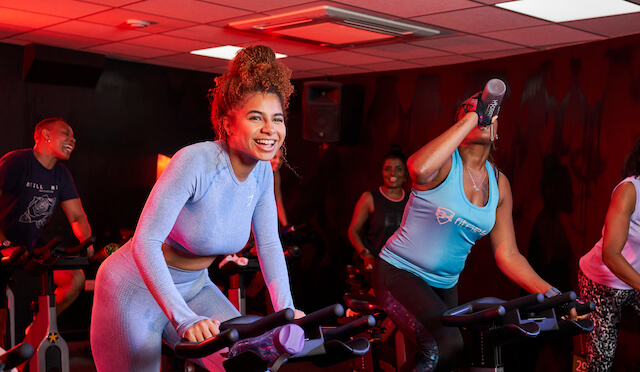
When it comes to staying fit and healthy, the options can seem endless. But personal trainers and group exercise classes are two of the most common ways for people to stay active and work on their fitness. Which one is better? While both have benefits, the answer may depend on your individual needs, goals and lifestyle. Whether you’re new to working out or just looking for a change, understanding the pros and cons of these two popular fitness activities can help you make the right choice for your current situation. Both personal training and group exercise have their own unique sets of benefits. It’s up to you to decide which is best for your lifestyle as well as your current fitness level.
Group Exercise: What to Know
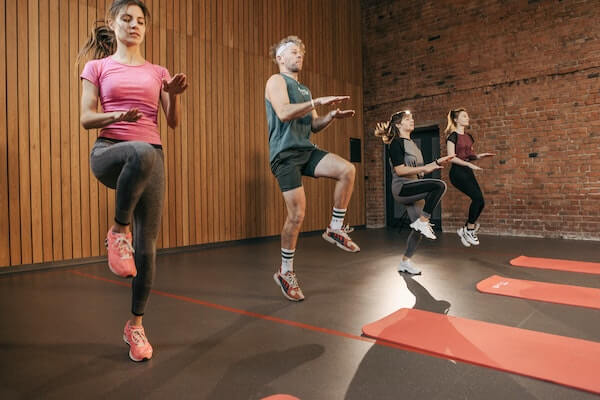
Group exercise classes are a form of exercise done in a group setting. They typically include activities such as cardio, strength training, and flexibility exercises. Group exercise classes can be done at a gym but are also common in yoga studios and athletic facilities. Group classes can provide social support, help you learn new techniques and keep you accountable. The combination of different types of exercises in most group exercise classes means you get a full-body workout that incorporates your core, cardiovascular system and more. You can even do things like strength training and yoga as a group activity, giving you a total body workout. You just need to decide which type of group classes work best for you and try them out.
Group Exercise Benefits
The benefits of group exercise sessions are numerous and varied. Whether you are a seasoned gym-goer or just starting out on your fitness journey, participating in group exercise can be a fun and effective way to improve your physical and mental health.
One major benefit of group exercise is the social aspect. When working out in a group, you have the opportunity to make new friends and form a sense of community. This can be especially helpful for those who are new to a gym or exercise routine and may be feeling a bit intimidated or unsure of themselves. Having a supportive group of like-minded individuals can provide motivation and encouragement, which can be crucial for sticking to your exercise routine and achieving your fitness goals.
In addition to the social aspect, group exercise can provide a sense of accountability. When you know that you have committed to working out with others, you are more likely to show up and give it your all. This can be especially helpful on days when you might be feeling a bit low on energy or motivation. Having others depending on you to be there can help you stay focused and on track.
Group exercise can also provide a sense of competition, which can be a great motivator for some people. Whether you are competing against others in the group or just trying to beat your own personal best, the feeling of accomplishment that comes with making progress can be a powerful motivator.
One of the most obvious benefits of group exercise is the fact that it provides a full-body workout. Depending on the type of group exercise you participate in, you can work on improving your cardiovascular health, strength, and flexibility all in one session. This is especially convenient for those with busy schedules who may not have the time to focus on different aspects of their fitness separately.
Another major benefit of group exercise is the fact that it can be an excellent stress-reducer. Exercise in general has been shown to release endorphins, which are the body's natural feel-good chemicals. When you participate in group exercise, the positive energy and camaraderie of the group can further enhance this effect. After a tough day at work or dealing with personal challenges, a group exercise session can be the perfect way to blow off steam and improve your overall sense of well-being.
In addition to the physical benefits, group exercise can also have a positive impact on mental health. The sense of accomplishment that comes with meeting fitness goals and the social interaction that takes place during group exercise can both contribute to improved mental health. Participating in group exercise can be a great way to take a break from daily stressors and focus on taking care of yourself.
One of the great things about group exercise is the variety of options available. Whether you are interested in high-intensity interval training, yoga, dancing, or something else entirely, there is likely a group exercise class that will suit your interests and fitness level. This can make group exercise more enjoyable and keep things interesting, which can be especially helpful for those who may be feeling a bit burnt out on their usual exercise routine.
Finally, group exercise can be a more affordable option for those who may not be able to afford a personal trainer or expensive gym membership. Many gyms and community centers offer a variety of group exercise classes at a fraction of the cost of one-on-one training.
In conclusion, group exercise sessions can be a fun and effective way to improve your physical and mental health, make new friends, and stay motivated to reach your fitness goals. With the variety of options available and the social and accountability factors, group exercise is a great choice for anyone looking to improve their overall well-being.
Group Exercise Downsides
While group exercise sessions can provide a number of benefits, it's important to be aware of the potential downsides as well. Here are a few of the potential drawbacks to consider when deciding whether group exercise is right for you.
One potential downside of group exercise is the fact that it may not be suitable for people with certain physical limitations or injuries. Depending on the type of group exercise you are participating in, certain movements or positions may be difficult or even impossible to perform. In some cases, group exercise instructors may not have the time or resources to provide modifications or alternative exercises for individuals with specific needs. This can be frustrating for those who are looking to exercise but may not be able to fully participate in the group.
Another potential downside is the fact that group exercise may not be as personalized as other forms of exercise. While group exercise instructors can provide general guidance and modifications for different fitness levels, they may not be able to tailor the workout to your specific goals or needs. If you are looking for more customized or one-on-one attention, group exercise may not be the best option.
Group exercise can also be less convenient than other forms of exercise, especially for those with busy schedules. Depending on the location and timing of the group exercise class, it may be difficult to fit into your schedule. In addition, if you are unable to attend a class for any reason, you may miss out on your workout for the day. This can be frustrating for those who are looking for more flexibility in their exercise routine.
There is also the potential for group exercise to be less private than other forms of exercise. If you are someone who values privacy or is self-conscious about your fitness level, group exercise may not be the best option. Depending on the size of the group and the location of the class, you may feel like you are on display or being judged by others. This can be intimidating for some people and may discourage them from participating in group exercise.
Finally, group exercise can be more expensive than other forms of exercise, especially if you are paying for multiple classes or a membership at a gym or studio. While group exercise can be a more affordable option compared to one-on-one training, it may not be feasible for everyone's budget.
Personal Training: What to Know
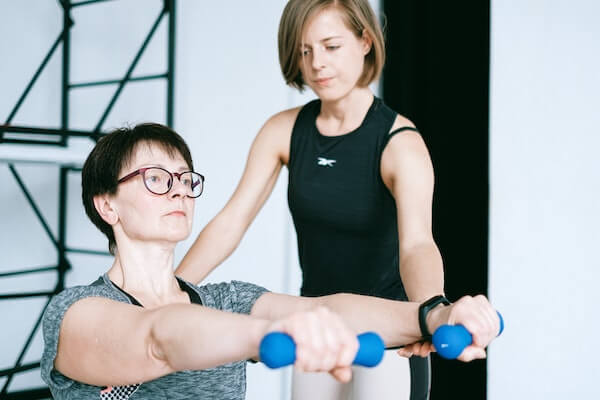
Personal training is a one-on-one relationship that helps you meet specific fitness and health goals. A personal trainer works with you to create a custom fitness plan to help you transform your body, build strength and achieve your fitness goals. You can work with a personal trainer in person or virtually, through online coaching programs. Personal trainers focus on helping you reach your fitness goals, such as building muscle or losing weight. Personal training can be a great option if you’re self-conscious about going to a group exercise class and don’t like exercising alone at home. Working with a personal trainer can help you overcome any reservations you may have about exercising in public.
Personal Training Benefits
Personal training sessions offer a number of benefits for people who want to improve their physical health and fitness. These sessions provide an opportunity for individuals to work with a qualified and experienced professional who can create a customized workout plan based on their specific needs and goals. In this article, we'll explore some of the key benefits of personal training sessions.
-
Increased motivation: One of the main benefits of personal training is the motivation it provides. It can be tough to stay motivated when you're working out on your own, especially if you're not seeing the results you want. But with a personal trainer by your side, you'll have someone who is there to encourage and motivate you to push yourself harder and achieve your goals.
-
Customized workout plans: A personal trainer can help you design a workout plan that is tailored to your specific needs and goals. This means that you'll be working on exercises and activities that are most effective for you, rather than following a generic workout plan that may not be suitable for your body or fitness level.
-
Improved form and technique: Personal trainers are experts in proper form and technique, which is essential for getting the most out of your workouts and avoiding injury. They can help you learn how to perform exercises correctly, so you can get the maximum benefit from your workouts and reduce the risk of injury.
-
Increased accountability: Another benefit of personal training is the accountability it provides. When you have someone who is expecting you to show up for your workouts, you'll be more likely to stay on track and follow through with your fitness plan. This can be especially helpful if you tend to lose motivation or get sidetracked easily.
-
Better results: With a personalized workout plan and the guidance of a qualified trainer, you'll be more likely to see results faster. Personal trainers can help you set realistic goals and create a plan to achieve them, so you can make progress and see the results you want.
-
Safe and effective workouts: Personal trainers are trained to design safe and effective workouts for their clients. This is especially important for people who are new to exercise or have any health concerns or injuries. A personal trainer can help you modify your workouts to suit your needs and ensure that you're exercising safely.
-
Help with nutrition: Personal trainers are also knowledgeable about nutrition and can help you create a healthy eating plan that supports your fitness goals. They can teach you about healthy food choices, portion sizes, and how to create a balanced diet that will help you reach your goals.
-
Improved confidence: As you make progress with your personal training sessions, you'll likely see improvements in your physical fitness and appearance. This can lead to increased confidence and a positive body image, which can have a positive impact on all areas of your life.
-
Ongoing support: One of the best things about personal training is the ongoing support and guidance you'll receive. Your personal trainer will be there to answer your questions, offer advice and encouragement, and help you stay on track with your fitness plan.
Personal training sessions offer a number of benefits for people who want to improve their physical health and fitness. These sessions provide an opportunity to work with a qualified professional who can design a customized workout plan based on your specific needs and goals. Personal training can help you stay motivated, improve your form and technique, see better results, and get ongoing support and guidance.
Personal Training Downsides
While personal training sessions can offer a number of benefits, there are also a few downsides to consider. These sessions can be more expensive than working out on your own, and they may not be suitable for everyone. In this article, we'll explore some of the potential downsides of personal training sessions.
-
Cost: One of the main downsides of personal training is the cost. These sessions can be expensive, especially if you're working with a highly qualified and experienced trainer. While the cost may be worth it for some people, it may not be feasible for everyone.
-
Dependence on the trainer: While personal training can be effective, it's important to remember that you are ultimately responsible for your own progress. If you become too reliant on your trainer, you may struggle to maintain your progress when you're not working with them. It's important to learn how to exercise independently and develop your own motivation and discipline.
-
Limited flexibility: With personal training, you'll need to work around your trainer's schedule and availability. This can be inflexible, especially if you have last-minute changes to your schedule or if you need to reschedule a session.
-
Pressure to perform: With personal training, you may feel pressure to perform at a certain level or to meet certain goals. This can be stressful and may not be enjoyable for everyone. It's important to remember that exercise should be something that you enjoy, not something that causes undue stress.
-
Lack of privacy: For some people, personal training sessions can be a bit more intimate than working out in a group setting, as you'll be working one-on-one with a trainer. If you're not comfortable with this level of personal attention, you may not enjoy personal training.
-
Limited social interaction: Personal training can be a solitary activity, as you'll be working with your trainer rather than interacting with a group of people. If you enjoy the social aspect of exercise, personal training may not be the best fit for you.
-
Boredom: If you don't enjoy the activities that your trainer has planned for you, you may get bored during your training sessions. It's important to communicate with your trainer about what you enjoy and don't enjoy, so they can design a workout plan that works for you.
It's important to weigh the pros and cons before committing to personal training,
Key takeaway
Overall, there are plenty of benefits to both group exercise and personal training. The best choice for you will largely depend on your individual lifestyle, fitness goals and what you’re looking to get out of each type of exercise.
If you’re unsure which one is best for you, ask yourself these questions:
- What do I want to get out of working out?
- What times of day and which days of the week are best for me to exercise?
- What do I like to do?
After answering these questions, you should have a better idea of which type of fitness activity is best for you. If you’re just starting out with fitness, it’s helpful to get advice from someone who’s been there before. While both types of exercise have their benefits, you’re sure to get the most value out of whatever you choose by staying consistent, staying focused and putting in the work.



